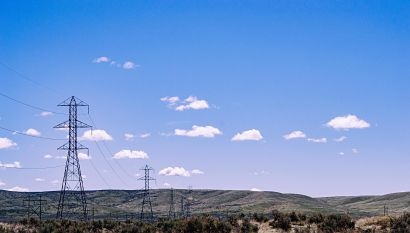
Dozens of offshore wind projects off US shores are currently in the pipeline. The Brattle Group report, titled The Benefit and Urgency of Planned Offshore Transmission, finds that starting this collaborative planning process now will significantly reduce costs, reduce environmental and community impacts, increase grid reliability, and make it possible to achieve climate and clean energy goals in a timely fashion.
Leveraging existing studies in the United States and Europe, the study estimates that the benefits of proactive transmission planning for over 100 gigawatts (GW) of likely US offshore wind generation developments over the next 2-3 decades include:
At least $20 billion in transmission-related cost savings;
60-70 percent fewer shore crossings and necessary onshore transmissions upgrades;
Approximately 2,000 (50 percent) fewer miles of marine transmission cable installations disturbing the seabed;
More competitive procurement outcomes, increased consumer savings, enhanced reliability and grid resilience, and more timely investments in the local clean energy economy.
“There is no time to lose if we want to achieve any of these benefits” said Johannes Pfeifenberger, the lead author of the study and a Principal at The Brattle Group. “It requires that we start now to develop least-regrets transmission plans that can support states’ near-term offshore wind goals while simultaneously creating attractive transmission solutions to meet our long-term clean energy needs. Doing so will require unprecedented close coordination between states, federal agencies, and regional grid operators, along with significant improvements to the generation interconnection and grid planning processes used today.”
The Biden administration has set a goal of deploying 30 GW of offshore wind by 2030 – enough to power over 22 million homes – and 110 GW by 2050. Simultaneously, 11 coastal states have already set procurement targets that exceed 50 GW through 2035 and over 75 GW by 2045.
Transmission consists of the large-scale backbone power lines that span great distances to move electricity from power sources to demand centres like major metropolitan areas. Under current processes, it takes at least a decade to plan and build major new transmission lines.
The report warns that without urgent, collaborative planning, consumers could face billions of dollars of added costs and increased impacts to coastal habitats and communities. The study identifies hurdles to achieving cost-effective planning outcomes, but provides a roadmap with recommendations to address these challenges. These include:
Steps to enable multi-state coordination;
Taking advantage of available federal support and funding;
Standardisation of offshore transmission technologies;
Improvements to the existing planning processes for onshore and offshore transmission facilities that can also address a broad range of needs beyond the offshore wind sector.
The report was prepared by The Brattle Group with contributions from DNV and input from an advisory panel of policy and industry experts. American Clean Power (ACP), the American Council on Renewable Energy (ACORE), the Clean Air Task Force (CATF), GridLab, and the Natural Resources Defense Council (NRDC) commissioned the analysis.
For additional information:

